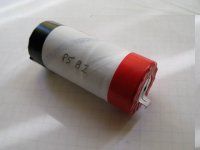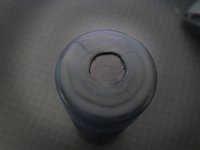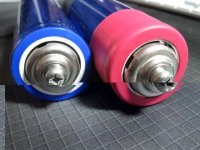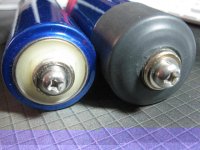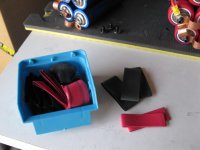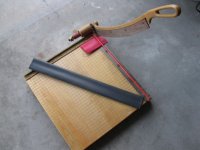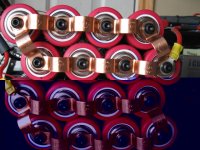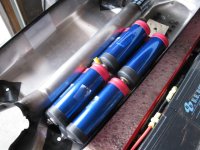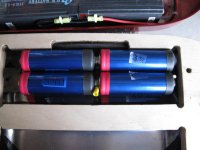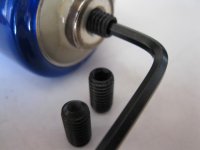voicecoils
1 MW
I've been thinking about the Headway cells and how to package them well for DIY packs.
A few things came to mind:
* having a small amount of space between cells is a good idea for airflow and mechanical isolation
* the body of the cell is live and positive (the cell 'can'). On the negative end, there is a close contact point between the negative contact and the positive can. This could cause a short if care is not taken.
* the can's body is covered in a thin blue plastic coating. It is only reasonably robust and can be cut or rubbed off from vibration.
So...I decided to make use of some old road bike tubes that had big punctures, rendering them useless for their original purpose. I call the concept, headway condoms...
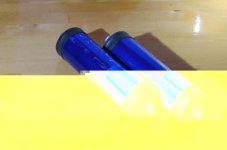
View attachment 1

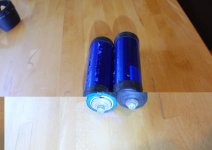
(please excuse the old bits of RTV silicon on the cells)
The tubes were for 700x23c tyres. Tubes for 700x28c tyres might be a bit easier to stretch over. I didn't cover the whole cells so that their would be a pathway for heat to escape from the pack between cells. The possibility of a short between at the negative end of the can is decreased by a large degree. Sitting 2 cells side by side gives just a nice 1-2mm gap between the cells, allowing for a tight pack to still be constructed.
What do you guys think?
A few things came to mind:
* having a small amount of space between cells is a good idea for airflow and mechanical isolation
* the body of the cell is live and positive (the cell 'can'). On the negative end, there is a close contact point between the negative contact and the positive can. This could cause a short if care is not taken.
* the can's body is covered in a thin blue plastic coating. It is only reasonably robust and can be cut or rubbed off from vibration.
So...I decided to make use of some old road bike tubes that had big punctures, rendering them useless for their original purpose. I call the concept, headway condoms...

View attachment 1


(please excuse the old bits of RTV silicon on the cells)
The tubes were for 700x23c tyres. Tubes for 700x28c tyres might be a bit easier to stretch over. I didn't cover the whole cells so that their would be a pathway for heat to escape from the pack between cells. The possibility of a short between at the negative end of the can is decreased by a large degree. Sitting 2 cells side by side gives just a nice 1-2mm gap between the cells, allowing for a tight pack to still be constructed.
What do you guys think?


